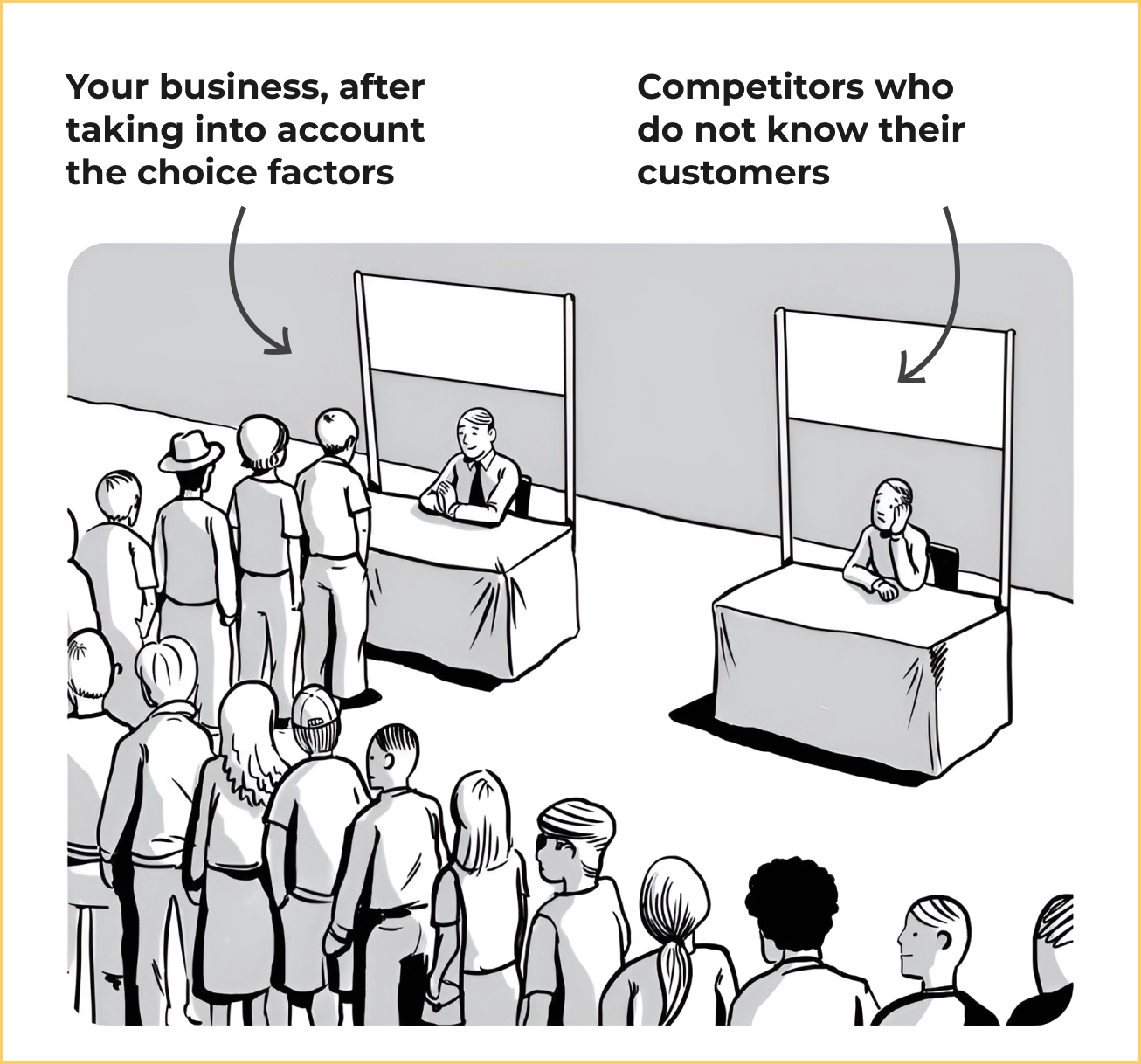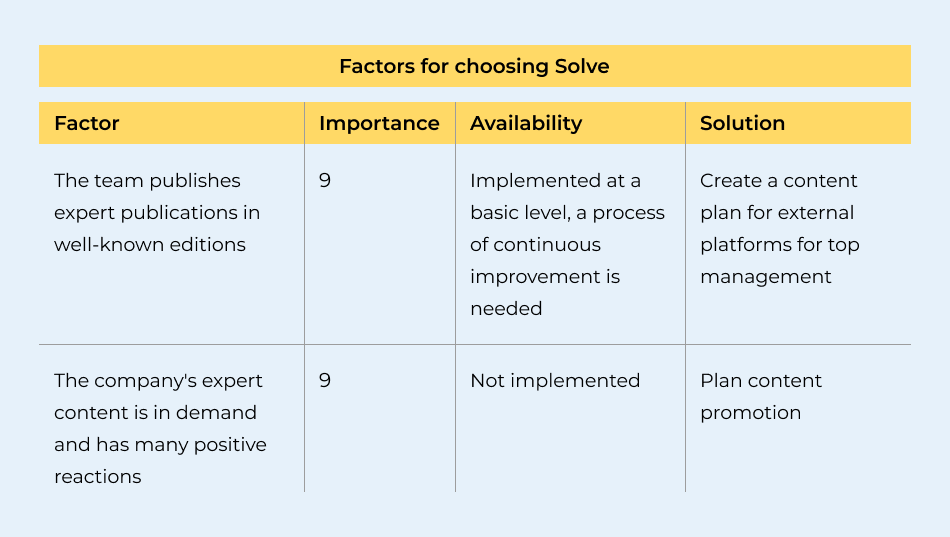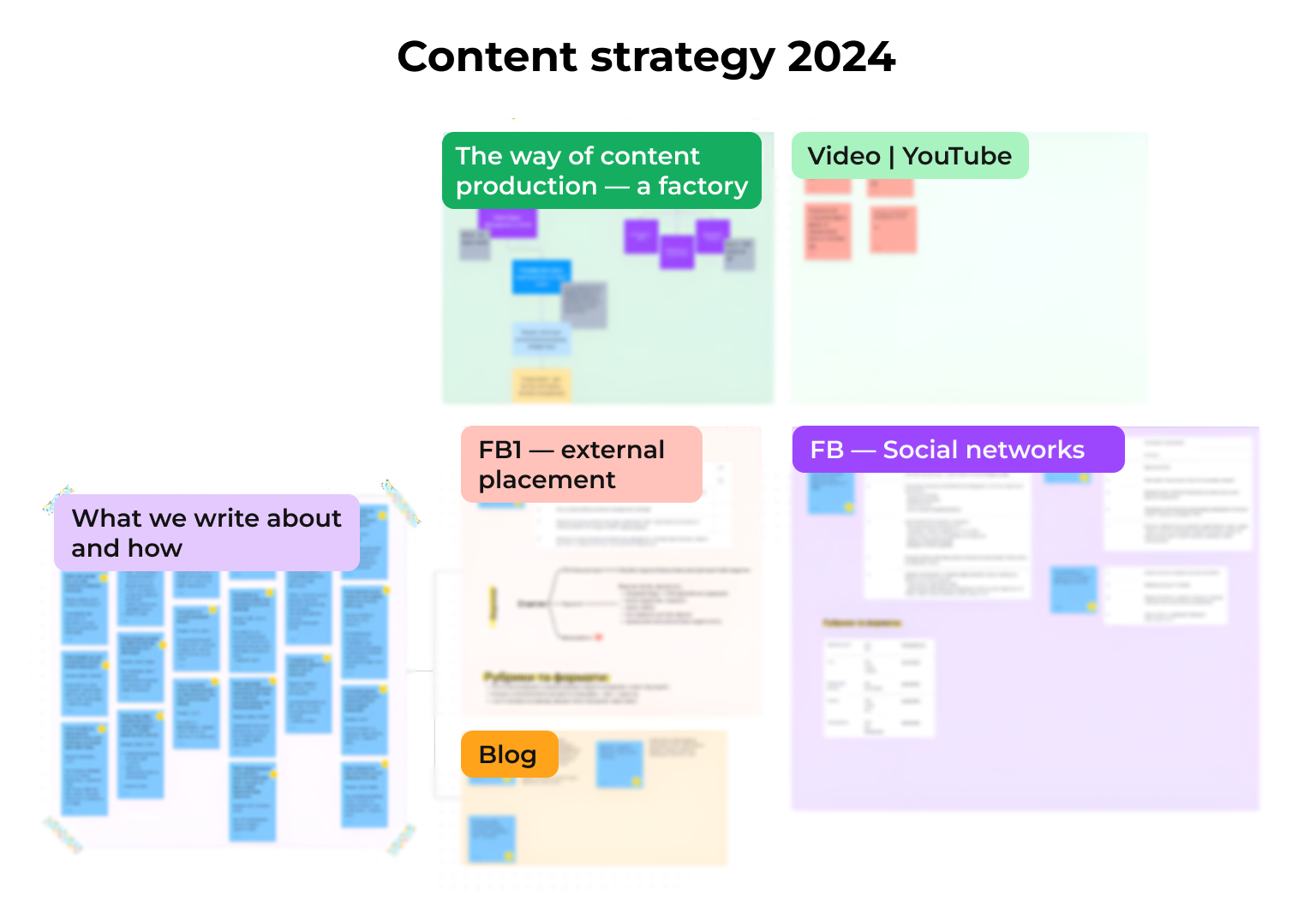Will they buy or won’t they buy is a dilemma that plagues all entrepreneurs and marketers. Will they choose your product or go to your competitors? You don’t need to be a magician to find out what potential customers think. After all, marketing can answer these questions with its in-depth interviews, focus groups, surveys, and research on customer choice factors.
At Solve Marketing, we practice a unique approach to studying target audiences. We determine what a customer thinks about at every step of the way to making a purchase by analyzing their choice factors in detail.
Do you want to be able to do the same so that people choose you? Read the article and master the magic of choice factors as the basis of your strategic marketing.
What are choice factors?
To find out what your customers really want, you need to do a lot of research. It’s not enough to just ask about expectations and needs. After all, people usually don’t know what they want.

So how do you act in this case? The task of marketers is to put themselves in the shoes of the consumer and go through their journey. At each stage (we’ll talk about them a little later), the client evaluates the benefits for himself, focuses on his values and needs.
In other words, the choice factors are the criteria by which the consumer determines which of the presented offers he or she should choose.
To put yourself in the shoes of all segments of the target audience, a specialist needs to analyze competitors, assess market dynamics, consumers (their behavior, needs, objections, communication), then put it all through the prism of competencies and their own experience and form a list of factors. It’s not easy at all.
But as a result, businesses get access to information that is of enormous importance. The more factors you research, the wider the range of interests of your target audience, the more relevant your offers will become, and the demand for your products will increase, as will your profits.
Main categories of choice factors
Let’s move on to define the steps a customer takes on the way to making a purchase. According to the stages of interaction, the choice factors can be divided into:
Step 1. Experience before interaction
At this stage, the consumer relies on the information they have before interacting with your segment. The company may have a misconception about the knowledge of potential customers who are not yet familiar with the product. For example, a person chooses wallpaper for their home and doesn’t find what they need. He has no idea that it is possible to customize any print to order.
Step 2. Positioning
When a potential customer has gained an understanding of the niche, he begins to evaluate different options based on certain factors. Businesses need to analyze what is important to the client when they have already started looking for a company. In addition, you need to know your competitors, their products or services, and their features. This way, you can create relevant offers.
Step 3. Interaction experience
This stage begins at the moment when the company has its first contact with the customer. For example, a person enters a store for the first time or is interested in an online offer. The customer analyzes the consultation, the quality and speed of service, the attentiveness of employees, the packaging of the product, and much more, in addition to the product itself. By analyzing the choice factors at this stage, you can bring the customer experience to perfection.
Step 4. Rational characteristics
The factors in this category include aspects mostly in numbers. This is something that can be easily compared to other market options.
The consumer analyzes:
- how many years of experience the company has;
- how many subscribers and reviews you have on your social networks;
- how long you provide the service / deliver the goods;
- what assortment you offer;
- what guarantees the business can get from the customer;
- and other factors depending on the niche.
Step 5. Post contact
Communication with the customer after the interaction is an extremely important stage. It determines whether customers will come back to you, recommend you to their friends, and leave positive feedback. A customer develops a loyal attitude if an employee asks whether they liked the cooperation, offers a discount on the next purchase, or tries to solve a possible problem.
You can learn more about the categories of choice factors and consider each step on an example in the article by Solve Marketing CEO Serhii Soloviov.
The process of forming choice factors
Now that you know the steps in the customer journey, you can identify the choice factors. To do this, you need to:
- Imagine yourself in the customer’s shoes
We’ve already talked about this above, but we’ll emphasize it again. To help customers choose you over your competitors, make sure your offers are relevant. People are guided not only by rational factors but also by emotions, spontaneity, and personal preferences. Research consumer behavior and you will gain their attention.
- Identify market leaders
Market leaders are those companies that have been able to realize the greatest number of choice factors. Customers feel that they are understood, so they come back again. Find out why customers go to the leaders. If you develop the same or even more choice factors, your company will become a leader.

- Design a model of ideal interaction
Imagine how all customer service processes should ideally work. By comparing the real situation with the desired level of service, you can chart a route to qualitative change.
- Write down as many choice factors as possible
There can be 50, 100, 200 such factors, there will never be too many of them. For Solve Marketing, we created a list of 220 factors — from the most important to the least. The more aspects you can take into account, the more perfect your strategy will be.
- Analyze the degree of factor implementation and development vectors
Just creating a list of choosing criteria will not be enough. Write down the level of importance, availability, and describe the implemented solutions for each item. This will help you track improvements.
But that’s not all. Let’s move on to implementing the choice factors into reality.
Reflection of choice factors in the company’s marketing strategy
Each choice factor can be realized through a specific marketing tool. And the interaction of these tools in order to realize the choice factors turns these points into a strategy. Therefore, with the help of properly selected marketing tools, each choice factor becomes a real task to be fulfilled. The important thing is that 1 factor = 1 task to implement.
Here’s what a part of the Solve Marketing choice factors table looks like.

Voila! You get a detailed action plan for business development and customer acquisition.
Influence of choice factors on business communication and positioning
You’ve identified the choosing criteria and can now apply them to your marketing strategy. To encourage the customer to solve the request in the way you propose, you need to convey this through communication.
First, you need to develop a positioning that takes into account the priority choice factors. For example, if a client is looking for a comprehensive solution for all marketing tasks of their business and doesn’t want to hire a staff, they can contact Solve Marketing. A remote marketing department takes a strategic approach to achieving business goals.
Next, you need to spread information about the benefits of the product through your website, blog, social media, newsletters, and other channels. This way, you can reach the right audience and influence customer decisions through a variety of content.
Here’s the Solve Marketing content strategy for 2024, based on the choice factors.

We have selected the most priority choice factors for the near future and divided them into areas of work. Each task has a detailed description and steps for effective implementation.
These tasks are then moved to monthly plans, assigned to specialists for implementation, and finally turned into an offer that cannot be refused.
To summarize
Choice factors are an effective methodology for forming the basis of a marketing strategy. Having studied its target audience well, a business can create a powerful positioning based on important criteria that will strengthen the relationship between the business and its customers. And a strategic approach to marketing will allow you to attract attention like a magnet and create a desire to make a purchase. Ultimately, all these efforts are converted into profit.
At Solve Marketing, we develop each strategy using 100+ choice factors individually researched for the project. With us, you will not just get an effective marketing tactic, but also an understanding of why a particular tool is used in it and the degree of its importance for the realization of the choice factors.




